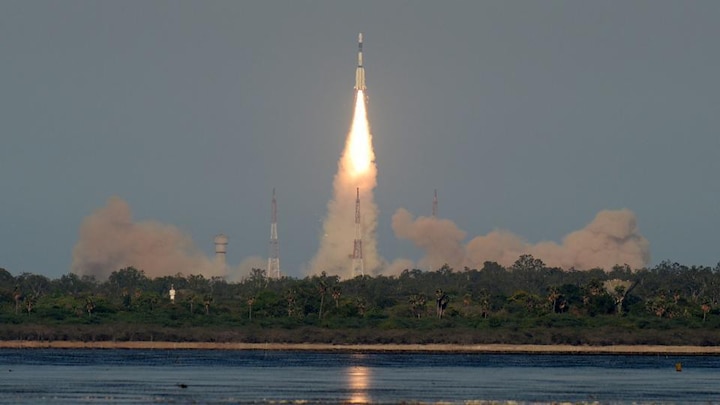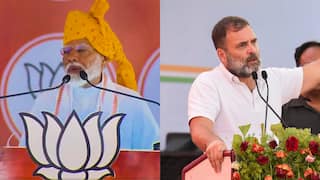Explorer
Advertisement

India makes cut-price entry into Heavy Satellite Launch Club

With the smooth launch of the Indian Space Research Organisation’s (ISRO) indigenous 640 tonne rocket, India has just joined a lucrative, if tiny, club of five member countries.
The rocket was tall as a 13 storey building, and called the Geosynchronous Satellite Launch Vehicle (GSLV), Mark III, or affectionately ‘Fat Boy” by its creators.
The global “Space Economy” for big satellites ticks over at $330 billion per 2015 figures, growing at 9% over 2014.
Commercial Space activity accounts for 76% of the total. The industry has also been growing consistently at7% compounded between 2005 and 2014. The speed now, seems to be accelerating. This, according to Doug Messler of the Space Foundation, Colorado Springs, in where else, Colorado.
Extrapolating on these 2015 figures by 10% per annum gives us nearly $400 billion at the start of 2017, with about 80% of it commercial activity, such as global navigation satellite systems integrated with billions of smartphone microchips receiving signals- a business itself growing at 18% p.a..
This is what these “big boys” sell, apart from the surveillance, spying, tracking, the weather-mapping, military communication, imaging, guiding of digitally controlled weaponry, satellite TV, high-speed internet, drones, and so on.
India’s long quest to develop its own economical but effective cryogenic engine has been realized at last. Now it can not only launch heavy geostationary satellites up to 4,000 kg. in weight, to orbit at 36,000 km in space already, but can potentially mount manned space flights in the not too distant future.
This rocket, built and sent at a cost of just Rs. 300-400 crores per launch, and its even more powerful successors anticipated, capable of hoisting 6,000 kg. satellites, could corner a good proportion of the nearly 20 heavy ones sent up annually, circa 2017.
Besides, the satellites too are improving, with lighter, lower mass electric propulsion satellites to guide them to their docking positions, coming up.
Even if India takes 5% of the geo satellite business at first, it means about $ 16 billion.
Compared to the whole of the small and micro satellite launching business, where ISRO is already quite prominent, at $5.5 billion total, the potential in the big satellite business is immensely greater financially speaking.
Analysts and policy wonks are divided over ISRO’s role however, and it can be argued that as a government agency, it is not completely profit driven as, for example, Ariane of France, or SpaceX of the US is.
Still, ISRO wants to build/modify and fire up at least one GSLV per year going forward, and conduct as many as 12 launches, including those of the little satellites via the Polar Satellite Launch Vehicle ( PSLV) programme.
All this costs a lot of money by Indian standards, and if the ISRO could self-finance itself, that would be altogether marvelous, and provide elbow room to it, and the government.
This first time, India launched only its own 3,136 kg. “GSAT 19” communications satellite.
The GSLV Mark III, sent into space from Sriharikota, was nicknamed “Fat Boy” by its scientists, likening its 640 tonnes to the weight of 20 elephants.
India is already a leading purveyor of small payloads into space, routinely launched by India’s PSLV programme. It is not only effective, but the most economical in the world, in this $5.5 billion segment.
Currently, the players capable of hoisting the 2,500 Kg, to more than 5,400 kg “Geo Satellites” into geostationary orbits in space, 36,000 km from earth, come from just five countries.
There is the US government’s NASA’s successors of Titan, from the 1980s. America, in fact, sent up its Saturn V, way back, between 1967 and 1973, with its total mass at lift-off at four times the present Indian rocket!
Then there is Lockheed Martin’s Atlas series, Boeing’s Delta, and the Falcon, Falcon 9, and Falcon Heavy from SpaceX.
There’s Russia’s Roscosmos’ Proton, and Angara too, France’s Ariane, China’s Long March series, and Japan’s Mitsubishi series.
India is late to the table because it was denied access the then available technology, owing to sanctions, post India’s unilateral nuclear weaponisation in 1998.
Still, many of the original scientists who began work on the home grown cyrogenic engine in 2002, based on Russian/Ukranian blueprints of the time, were on hand to witness the new Indian designs and successful launch in 2017, after several earlier failures.
With an increasing reputation for frugal engineering, ISRO is an exceptional success story for Indian Science and the government-owned public sector. That it is poised to reap a golden harvest from its excellence, is reason for celebration.
Will it also spawn private sector and joint venture interest, even competition, going forward?
Only time, and the commercial opportunities thrown up in the space business will tell.
(Gautam Mukherjee is a blogger on politics, economics and policy. His twitter handle is @gautammuk)
Disclaimer: The opinions, beliefs and views expressed by the various authors and forum participants on this website are personal and do not reflect the opinions, beliefs and views of ABP News Network Pvt Ltd.
Follow Blog News on abp LIVE for more latest stories and trending topics. Watch breaking news and top headlines online on abp News LIVE TV
View More
Advertisement
Advertisement
Advertisement
Advertisement
Trending News

for smartphones
and tablets
and tablets




























